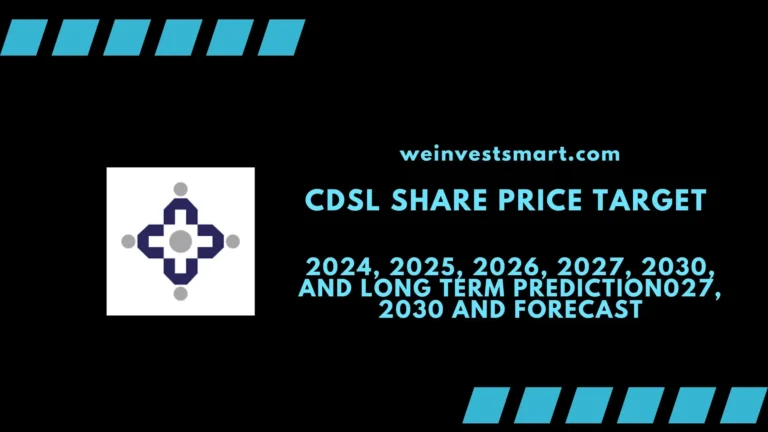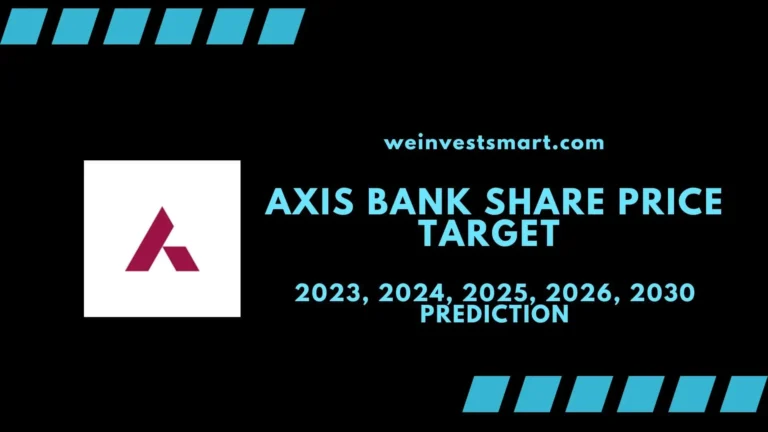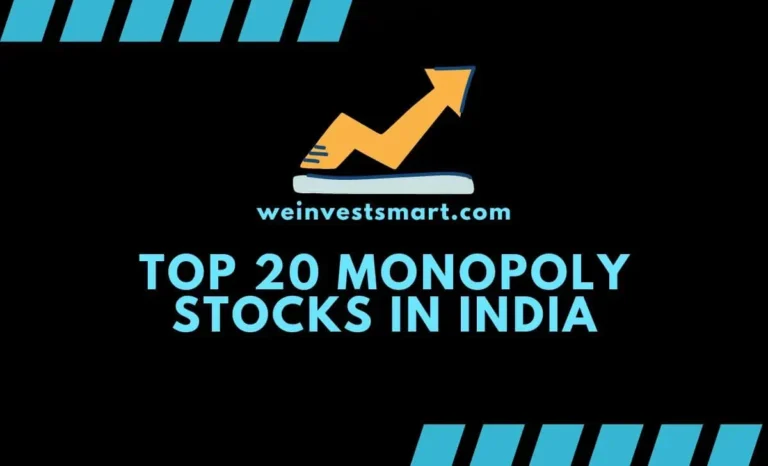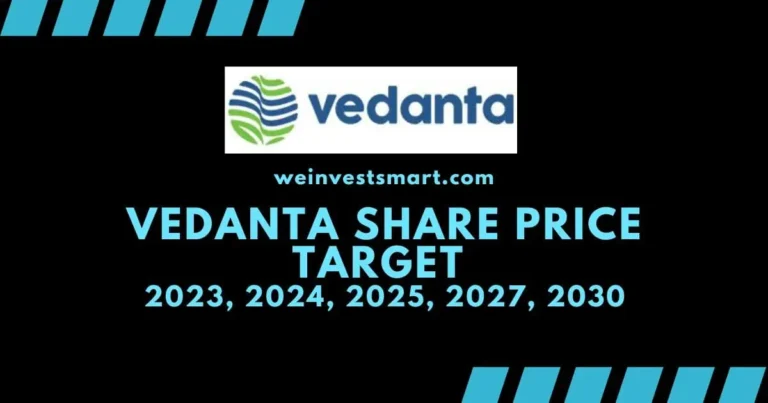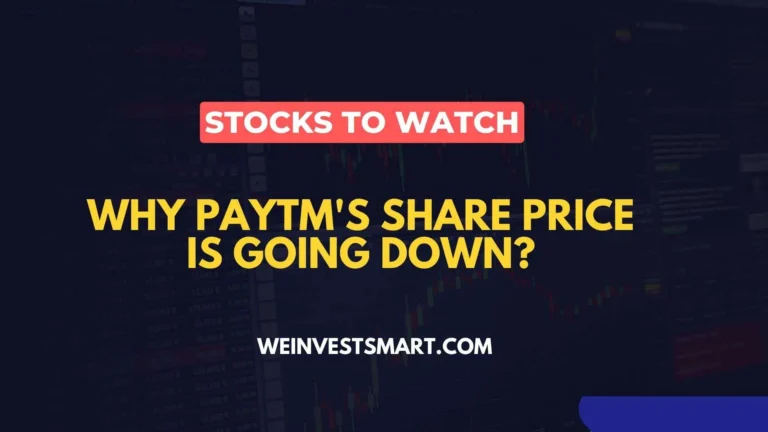RVNL Share Price Target 2024, 2025, 2026, 2027, 2030 Prediction: Buy or Sell?
Rail Vikas Nigam Ltd. (RVNL) is a public sector undertaking under the Ministry of Railways, Government of India. It was incorporated in 2003 with the aim of enhancing rail infrastructure development in India. RVNL is responsible for executing railway projects, including new lines, doubling, gauge conversion, electrification, and modernization of stations, workshops, and yards. In this article, we will look at RVNL Share Price Target 2024, 2025, 2026, 2027, 2030 and Long Term.
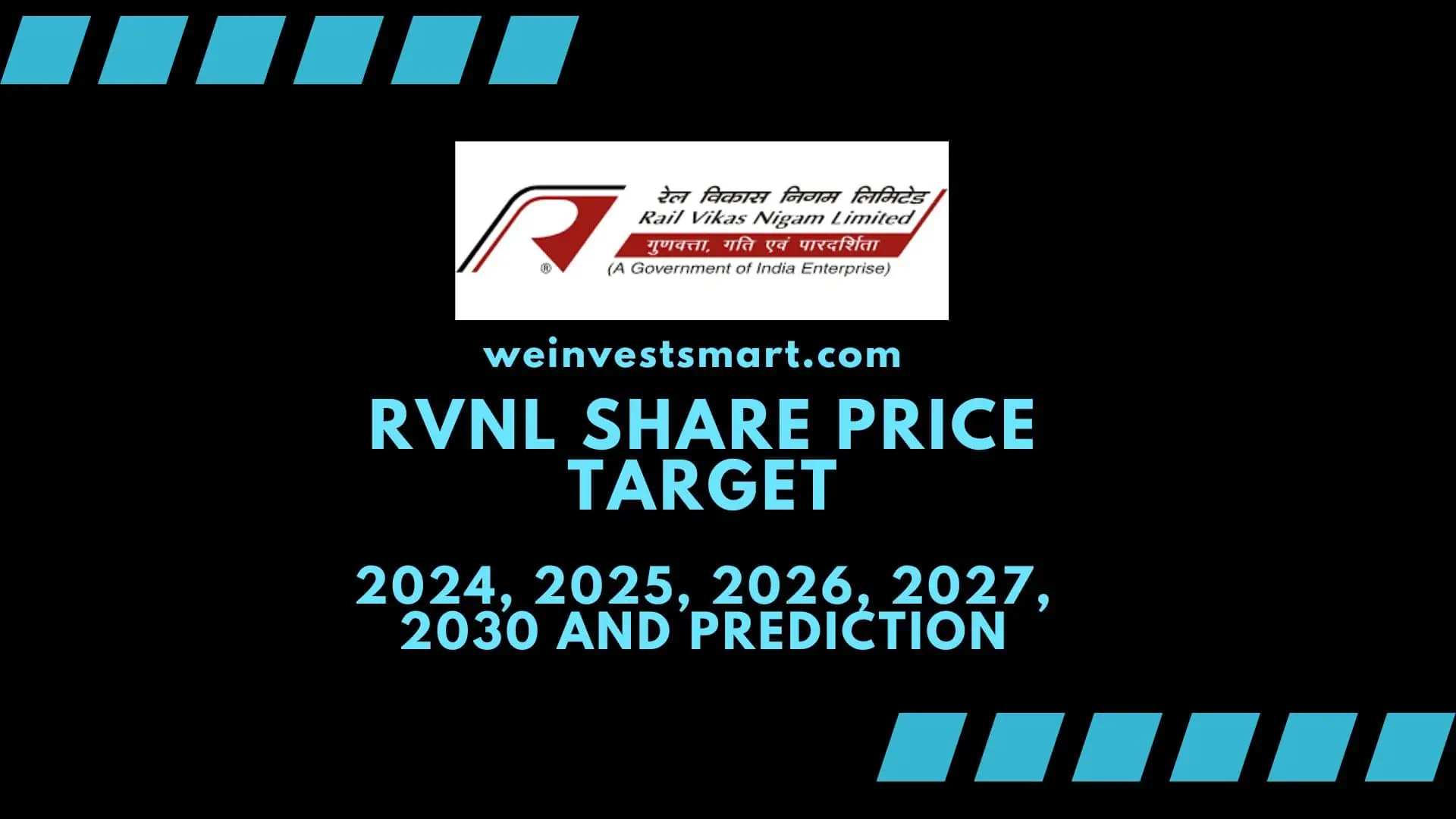
In this blog post, we will also analyze the performance of RVNL stock in terms of its strengths, weaknesses, opportunities, and threats. We will also look at the company’s financials, risks, future outlook, and whether RVNL Share is Buy or Sell.
Consider reading: IRCTC Share Price Forecast
Page Contents
RVNL Share Price Target 2024, 2025, 2026, 2027, 2030
| Year | Minimum Share Price Target | Maximum Share Price Target |
|---|---|---|
| 2024 | ₹278.80 | ₹292.42 |
| 2025 | ₹348.50 | ₹365.53 |
| 2026 | ₹435.63 | ₹456.91 |
| 2027 | ₹544.53 | ₹571.13 |
| 2028 | ₹680.66 | ₹713.92 |
| 2029 | ₹850.83 | ₹892.40 |
| 2030 | ₹1,063.54 | ₹1,115.49 |
| 2031 | ₹1,329.42 | ₹1,394.37 |
| 2032 | ₹1,661.78 | ₹1,742.96 |
| 2033 | ₹2,077.22 | ₹2,178.70 |
Consider reading: HAL Share Price Target and Prediction
RVNL Share Price Live Chart and History
Strengths of RVNL Stock
RVNL stock has several strengths that make it an attractive investment option. Some of the key strengths are:
- Impressive Financial Growth: Over the past five years, RVNL has demonstrated remarkable growth in its revenue and profits. Specifically, the company’s revenue escalated at a 27% CAGR, rising from ₹10,069 crore in FY19 to ₹19,382 crore in FY23. Concurrently, net profits soared at an 18.8% CAGR, from ₹688 crore in FY19 to ₹1,421 crore in FY23. This growth trajectory is attributed to the successful execution of various railway projects and the efficient management of payments from the Ministry of Railways.
- Reduced Risk of Counterparty Defaults: RVNL’s clientele primarily includes reputable central and state government undertakings like the Ministry of Railways, NHSRCL, DFCCIL, and several metro rail corporations. These entities, known for their strong creditworthiness and government backing, significantly lower the risk of payment defaults or delays for RVNL.
- Robust Order Book: As of July 31, 2023, RVNL boasts a formidable order book valued at ₹1,04,000 crore. The majority of these projects are commissioned by the Ministry of Railways on a nomination basis, which guarantees a cost-plus margin. This arrangement not only secures revenue visibility for the coming three years but also ensures sustained profitability. Additionally, RVNL’s venture into open market bidding and international projects, often through joint ventures, marks a strategic move to diversify and expand its revenue base.
- Stable Financial Risk Profile: RVNL enjoys a sound financial footing, characterized by minimal dependency on external borrowings and a strong liquidity position. Its debt-to-equity ratio as of March 31, 2023, stood at a mere 0.04, indicating low leverage and high solvency. The company’s liquidity ratios, with a quick ratio of 11.9 and a current ratio of 12.1, reflect its robust capacity to meet short-term liabilities. Furthermore, a substantial cash reserve of ₹4,503 crore as of March 31, 2023, provides ample support for working capital and capital expenditure needs.
In summary, RVNL stock emerges as a lucrative investment option, backed by its consistent revenue and profit growth, low counterparty risk, strong order book, and healthy financial risk profile. These attributes not only underscore the company’s operational excellence but also reinforce its financial resilience, making it a compelling choice for investors in India.
Consider reading: OFSS Oracle Financial Services Share Price Target 2024, 2025, 2026, 2030 Prediction
RVNL Share Price Target 2024
| Year | Minimum Share Price Target | Maximum Share Price Target |
|---|---|---|
| 2024 | ₹278.80 | ₹292.42 |
In 2024, RVNL has set a minimum share price target of ₹278.80 and a maximum share price target of ₹292.42, based on extensive market research and by analyst recommendations.
RVNL Shares: Buy or Sell?
Weaknesses of RVNL Stock
RVNL stock also has some weaknesses that need to be addressed. Some of the key weaknesses are:
- Moderate Profitability Levels: RVNL’s profitability, though consistent, falls short of industry benchmarks. For FY23, its operating profit margin (OPM) stood at 9.6%, and its net profit margin (NPM) at 7.3%, both trailing the industry averages of 11.5% and 8.5%, respectively. This modest profitability is largely due to the cost-plus margin structure inherent in nomination-based projects, which caps potential margin growth. Further, competition within the railway sector could pressure RVNL’s pricing and margins, affecting overall profitability.
- Risks Associated with Large-Sized BOT Projects: RVNL’s involvement in significant build-operate-transfer (BOT) projects presents specific risks. With an investment of ₹1,187 crore in these projects as of March 31, 2023, accounting for 18.3% of its net worth, the company is exposed to the challenges typical of BOT projects. These include extended gestation periods, high capital demands, regulatory uncertainties, and dependency on traffic and tariffs. Such factors could impact the returns and cash flows from these projects, potentially necessitating additional funding.
- Decline in Net Cash Flow: The company’s net cash flow from operating activities has seen a downward trend, dropping from ₹1,608 crore in FY19 to ₹1,050 crore in FY23. This decline is primarily attributed to increased working capital needs, spurred by a rise in trade receivables and contractor advances. As of March 31, 2023, RVNL’s trade receivables were ₹7,020 crore, representing 36.2% of its revenue, while advances to contractors stood at ₹4,447 crore, equating to 22.9% of its revenue. Such high levels indicate delays in payment realizations from clients and contractors, potentially affecting the company’s liquidity and cash flow.
In Summary: While RVNL possesses several strengths, it’s essential to acknowledge and address its weaknesses. These include moderate profitability, exposure to the risks of large-sized BOT projects, and a declining trend in net cash flow. These aspects highlight certain operational and financial challenges that the company faces, which are critical for investors to consider in their evaluation of RVNL as an investment opportunity in India.
RVNL Share Price Target 2025
| Year | Minimum Share Price Target | Maximum Share Price Target |
|---|---|---|
| 2025 | ₹348.50 | ₹365.53 |
For 2025, RVNL share price target is a minimum of ₹348.50 and a maximum share price target of ₹365.53, reflecting market insights and analyst recommendations.
SWOT Analysis of RVNL Stock
Here is a SWOT analysis of RVNL stock:
Strengths:
- Robust Growth in Revenue and Profit: RVNL’s impressive track record of revenue and profit growth, marked by a significant compound annual growth rate over the past few years, underscores its operational success.
- Low Counterparty Risk: The company’s strong client base, primarily consisting of reliable government undertakings, ensures a low risk of default or payment delays.
- Solid Order Book Position: A substantial order book value as of 2023, predominantly filled with Ministry of Railways projects, offers excellent revenue visibility and profitability for the next few years.
- Favorable Financial Risk Profile: RVNL’s financial health is robust, characterized by low dependence on external borrowings and a strong liquidity position.
Weaknesses:
- Moderate Profitability: The company’s profitability, though stable, is moderate and tends to be lower than the industry average, due in part to the cost-plus margin structure of its projects.
- Exposure to Large-Sized BOT Projects: RVNL’s involvement in large BOT projects carries inherent life cycle risks, including regulatory uncertainties and dependence on fluctuating traffic volumes and tariffs.
- Declining Net Cash Flow: A noticeable decrease in net cash flow, mainly due to increased working capital requirements, raises concerns about the company’s liquidity and cash flow management.
Opportunities:
- Rising Demand for Rail Infrastructure Development: India’s growing focus on enhancing its rail infrastructure presents significant growth opportunities for RVNL.
- Diversification into Open Market and International Projects: Expanding into new markets and international projects can diversify RVNL’s revenue sources and enhance its operational footprint.
- Adoption of New Technologies and Innovation: Embracing technological advancements and innovation can improve the company’s efficiency and competitiveness.
- Expansion into New Segments and Geographies: Exploring new business segments and geographical areas can provide additional avenues for growth.
Threats:
- Competition from Other Players in the Railway Sector: Intense competition could impact RVNL’s market share and profitability.
- Regulatory and Policy Changes: Changes in government policies and regulations can affect the company’s project execution and profitability.
- Environmental and Social Risks: Projects in the railway sector often face environmental and social challenges, which can lead to delays and increased costs.
- Economic Slowdown and Pandemic Impact: Macroeconomic factors, including economic downturns and the aftermath of the pandemic, could affect the demand for rail infrastructure projects.
Summary: The SWOT analysis of RVNL reveals that while the company is well-positioned with strong growth, a reliable client base, and a solid financial profile, it faces challenges such as moderate profitability, exposure to risky BOT projects, and declining cash flow. Opportunities for expansion and diversification, along with the adoption of new technologies, are promising. However, these are counterbalanced by potential threats from competition, regulatory changes, and broader economic factors. This analysis is crucial for investors in India to make informed decisions about RVNL stock.
Consider reading: ITC Stock Price Target
RVNL Share Price Target 2026
| Year | Minimum Share Price Target | Maximum Share Price Target |
|---|---|---|
| 2026 | ₹435.63 | ₹456.91 |
In 2026, RVNL share price target is minimum ₹435.63 and a maximum share price target of ₹456.91, based on comprehensive market research and analyst insights.
RVNL Company Financials
RVNL company financials provide a snapshot of the company’s financial performance and position. The company’s financials include income statement, balance sheet, and cash flow statement. The company’s financials are prepared in accordance with the Indian Accounting Standards (Ind AS) and are audited by independent statutory auditors. Here is a summary of the company’s financials for the past five years:
| Particulars | FY19 | FY20 | FY21 | FY22 | FY23 |
|---|---|---|---|---|---|
| Operating Revenue (Rs crore) | 10,069 | 13,165 | 15,981 | 17,654 | 19,382 |
| Operating Profit (Rs crore) | 1,011 | 1,296 | 1,539 | 1,713 | 1,858 |
| Operating Profit Margin (%) | 10.0 | 9.8 | 9.6 | 9.7 | 9.6 |
| Net Profit (Rs crore) | 688 | 849 | 1,023 | 1,211 | 1,421 |
| Net Profit Margin (%) | 6.8 | 6.4 | 6.4 | 6.9 | 7.3 |
| Total Assets (Rs crore) | 9,506 | 11,278 | 13,462 | 15,789 | 18,362 |
| Total Liabilities (Rs crore) | 3,411 | 4,046 | 4,892 | 5,866 | 6,988 |
| Net Worth (Rs crore) | 6,095 | 7,232 | 8,570 | 9,923 | 11,374 |
| Debt-to-Equity Ratio | 0.05 | 0.05 | 0.04 | 0.04 | 0.04 |
| Quick Ratio | 12.2 | 11.8 | 12.0 | 11.7 | 11.9 |
| Current Ratio | 12.3 | 12.0 | 12.2 | 11.9 | 12.1 |
| Return on Equity (%) | 11.3 | 11.7 | 11.9 | 12.2 | 12.5 |
| Return on Assets (%) | 7.2 | 7.5 | 7.6 | 7.7 | 7.7 |
| Earnings Per Share (Rs) | 1.7 | 2.1 | 2.5 | 3.0 | 3.5 |
| Dividend Per Share (Rs) | 0.5 | 0.6 | 0.7 | 0.8 | 0.9 |
RVNL company financials provide a snapshot of the company’s financial performance and position. The company has reported a consistent growth in its revenue and profit, and has maintained a healthy financial risk profile. The company has also rewarded its shareholders with regular dividends and has improved its return ratios.
Consider reading: HUDCO Share Price Target
RVNL Share Price Target 2030
| Year | Minimum Share Price Target | Maximum Share Price Target |
|---|---|---|
| 2030 | ₹1,063.54 | ₹1,115.49 |
Looking ahead to 2030, RVNL share price target is a minimum of ₹1,063.54 and a maximum share price target of ₹1,115.49, with these projections being influenced by thorough market research and recommendations from analysts.
Risks in the Future for RVNL
Rail Vikas Nigam Limited (RVNL), like any other company, is susceptible to a range of risks that could impact its future performance and growth trajectory. Understanding these risks is crucial for investors considering RVNL. Here’s an in-depth look at the potential challenges RVNL may face:
- Intense Sector Competition: RVNL operates in a highly competitive railway sector, contending with firms like IRCON and RITES, as well as private sector companies. These competitors might outperform RVNL in quality, cost-efficiency, or project execution speed, potentially eroding RVNL’s market share and profit margins. Furthermore, competition from other transport modes, including road, air, and water transport, could diminish the demand for rail infrastructure, directly affecting RVNL’s business prospects.
- Regulatory and Policy Changes: RVNL’s operations and profitability are closely tied to the regulatory and policy framework governing the railway sector. Changes in these areas can significantly influence project commissioning, revenue recognition, and cash flow. Such regulatory shifts might result in delays or modifications in project execution and financial planning.
- Environmental and Social Challenges: The nature of railway infrastructure projects exposes RVNL to various environmental and social challenges. Issues like land acquisition, resettlement, environmental impacts, and climate change can lead to social unrest, litigation, and reputational damage. These challenges not only have the potential to delay projects but can also escalate costs and impact the company’s commitment to sustainable practices.
- Macro-Economic Factors and Pandemic Aftermath: RVNL’s growth is closely linked to India’s overall economic health. Factors like inflation, interest rates, fiscal policies, and trade dynamics can influence the demand for rail infrastructure. Economic slowdowns could lead to reduced budget allocations and funding for infrastructure projects. Additionally, the ongoing impact of the COVID-19 pandemic poses risks related to supply chain disruptions, labour availability, and project execution, which could hinder RVNL’s revenue generation and operational efficiency.
Summary: RVNL, while poised for growth, faces significant future risks that include stiff competition within the railway sector, potential regulatory and policy shifts, environmental and social issues, and the impact of broader economic factors and the COVID-19 pandemic.
Consider reading: CDSL Share Price Target
Key Things to Watch Out for RVNL
Rail Vikas Nigam Limited (RVNL) stands out as a company with significant growth potential and a strong financial footing. However, investors must closely monitor specific aspects to gauge the company’s future trajectory and potential investment value. Here are the critical factors to keep an eye on:
- Order Book Growth and Diversification: A crucial indicator of RVNL’s future revenue and profitability is the growth and diversification of its order book. It’s vital for the company to not only maintain a robust order book but also to diversify its revenue streams. This includes venturing into the open market and exploring domestic and international projects. Expanding into new market segments and geographies can also unlock new opportunities and growth potentials within the railway sector.
- Project Execution and Completion Efficiency: The efficiency with which RVNL executes and completes its projects is a testament to its operational capabilities. The company needs to ensure that projects are completed on time and within budget while adhering to safety and environmental standards. Adopting innovative technologies and practices can enhance productivity and competitiveness, contributing to the company’s standing in the railway sector.
- Cash Flow and Working Capital Management: The management of cash flow and working capital is a key determinant of RVNL’s financial health and liquidity. Improving cash flow from operations and optimizing working capital are essential. This includes managing trade receivables and advances to contractors effectively to ensure prompt payment realization, thus minimizing the risk of bad debts and write-offs.
- Risk Management and Mitigation Strategies: Assessing and mitigating various risks is critical to RVNL’s long-term sustainability and resilience. The company must proactively address challenges arising from regulatory changes, environmental concerns, and economic fluctuations. Adopting a forward-looking approach to risk management is crucial for navigating an ever-changing business landscape.
Summary: For investors and stakeholders in RVNL, it’s imperative to closely observe these aspects: the growth and diversification of the order book, the efficacy of project execution and completion, the management of cash flow and working capital, and the strategies in place for risk management and mitigation.
Consider reading: TTML Share Price target
Closing Thoughts on RVNL Share Price Target 2024, 2025, 2026, 2027, 2030
As we evaluate Rail Vikas Nigam Limited (RVNL), a pivotal entity in India’s railway infrastructure development, the company’s growth trajectory in terms of revenue and profitability stands out. RVNL’s contribution to railway projects nationwide has solidified its financial risk profile and market position. This section aims to provide an informed projection of RVNL Share Price Targets for the years 2024, 2025, 2026, 2027, and 2030, drawing on the latest data and market analyses.
RVNL’s Market Position and Performance:
- Steady Growth: RVNL has shown consistent revenue and profit growth, indicating solid financial health and operational efficiency.
- Strategic Infrastructure Projects: RVNL’s involvement in critical railway infrastructure projects positions it as a key player in the sector.
RVNL Share Price Target Projections: Our analysis, which considers various market conditions and company performance metrics, leads to the following share price targets for RVNL:
- 2024: Considering the company’s current growth rate and market conditions, RVNL’s share price in 2024 could see a moderate increase.
- 2025 – 2026: Projected share price targets for these years suggest a continuing upward trend, contingent on the company’s execution of ongoing projects and market dynamics.
- 2027 – 2030: Long-term projections indicate potentially higher share price targets, reflecting RVNL’s strategic role in India’s railway sector development and expected market growth.
Investor Considerations:
- Market Dynamics: Investors should monitor market trends and economic factors that may impact RVNL’s performance.
- Project Execution: The successful completion of ongoing and future projects is a critical factor influencing RVNL’s valuation.
- Policy and Regulatory Changes: Government policies and regulatory changes in the infrastructure sector could impact RVNL’s operations and growth prospects.
Disclaimer:
- Not Investment Advice: This analysis is intended for informational purposes and should not be considered as investment advice.
- Independent Research Encouraged: Investors are advised to conduct their own research and due diligence to make informed investment decisions.
Final Thoughts: RVNL, with its steady growth and significant role in India’s railway sector, presents intriguing prospects for the future. While our analysis projects positive share price targets for the upcoming years, investors should consider RVNL’s stock within the context of broader market trends, infrastructure developments, and individual investment strategies.
FAQs on RVNL Share Price Target 2024, 2025, 2026, 2027, 2030
What is RVNL Share Price Target 2024?
The projected target for RVNL shares in 2024 is expected to vary from ₹200 to ₹250, averaging at ₹225.
What is RVNL Share Price Target 2025?
For 2025, the RVNL share price is estimated to fluctuate between ₹250 and ₹313, with an average expected target of ₹281.
What is RVNL Share Price Target 2026?
In 2026, the RVNL share price is anticipated to range from ₹313 to ₹391, with an average target set at ₹352.
What is RVNL Share Price Target 2030?
For the year 2030, RVNL shares are forecasted to have a price target ranging from ₹673 to ₹954, with an average expectation of ₹858.
